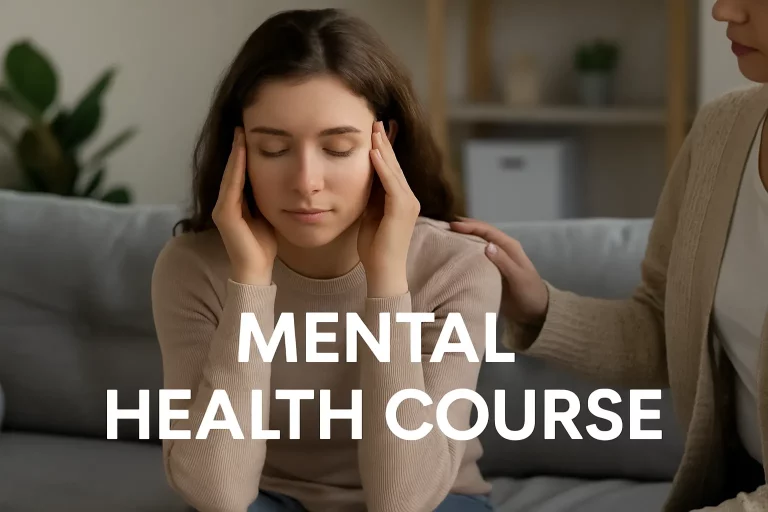Understanding the difference between hypomania and mania is essential for recognising symptoms and seeking the right treatment. Both are elevated mood states often linked to bipolar disorder, but they vary in intensity, duration, and impact.
In this guide, we’ll break down the signs of mania, hypomania symptoms, causes, and how long these episodes typically last, along with effective hypomania treatment strategies.

What is Mania?
Mania is a mental health condition that causes an extreme shift in mood, energy, and behaviour. It’s more than just feeling happy or energetic; it’s a state where emotions become overwhelming and thoughts race out of control. Mania is most often seen in people with bipolar I disorder and can seriously affect daily life if not treated properly.
Cl signs of mania include feeling overly confident or unstoppable, talking very fast, needing little or no sleep, and acting impulsively. Someone in a manic state might spend large amounts of money or initiate unrealistic projects without a plan. In severe cases, they may lose touch with reality and develop mania symptoms like delusions or paranoia.
What is Hypomania?
Hypomania is a less intense version of mania, characterised by noticeable changes in a person’s mood, energy, and behaviour. Although it doesn’t usually cause severe impairment in day-to-day functioning like full-blown mania, it can still have a significant impact if not addressed. These impacts may extend to one’s relationships, career, or overall mental health, especially if hypomania symptoms persist or worsen.
Individuals experiencing hypomania often feel an exaggerated sense of energy, enthusiasm, or irritability. They might talk more than usual, sleep significantly less, and feel highly productive or overly confident. At first glance, these behaviours appear harmless or beneficial. However, they often lead to impulsive decisions and increased risk-taking, which can create problems both personally and professionally.
Symptoms
Mania
Common signs of mania include:
- Extremely elevated or irritable mood
- Excessive energy and hyperactivity
- Little to no need for sleep (e.g., going days without sleeping)
- Rapid, pressured speech
- Flight of ideas or racing thoughts
- Grandiosity or exaggerated sense of self-importance
- Impulsive or reckless behaviour (e.g., substance abuse)
- Poor judgment and lack of insight
- Psychotic features (e.g., hallucinations, delusions)
- Aggression or agitation in severe cases
Hypomania
Common signs of hypomania include:
- Elevated or unusually irritable mood
- Increased energy and activity levels
- Reduced need for sleep (e.g., feeling rested after 3–5 hours)
- Excessive talking or pressure to keep talking
- Racing thoughts or easily jumping between ideas
- Heightened creativity or productivity
- Inflated self-confidence
- Increased sociability or impulsive social behaviour
- Mild risk-taking (e.g., spending sprees, impulsive decisions)
Be the difference in someone’s mental health journey.
Join Hurak’s Mental Health First Aid Courses and gain the confidence to support those experiencing challenges like mania and hypomania.
Enrol in our Mental Health First Aid Course today.
Causes
Mania symptoms and hypomania symptoms don’t appear randomly; they often have identifiable triggers. These elevated mood states can result from a blend of biological, psychological, and environmental factors.
- Genetic predisposition: Family history of bipolar disorder increases risk
- Neurochemical imbalances: Disruptions in dopamine, serotonin, or norepinephrine levels
- Sleep deprivation: Lack of sleep is a known trigger for mood episodes
- Substance use: Stimulants (e.g., cocaine, amphetamines) and alcohol can trigger episodes
- Antidepressant medications: Certain medications can induce mania without mood stabilisers.
- Stressful life events: Major changes like job loss, relationship issues, or grief.
- Seasonal changes: Some individuals are more prone during the spring or summer months.
- Underlying mental health conditions, Such as anxiety or ADHD, which may complicate mood regulation
Triggers
Recognising the triggers behind hypomanic and manic episodes can help individuals take preventive steps and maintain emotional balance.| Trigger Type | Hypomania | Mania |
| Sleep disruption | A few nights of poor sleep | Extended or total sleep loss |
| Stress level | Mild to moderate stress | Severe or traumatic stress |
| Substance involvement | Occasional or mild use | Heavy or frequent use |
| Medication sensitivity | Triggered by mild doses | Triggered by higher doses or abrupt changes |
| Social/Environmental | Overstimulation in social settings | Sensory overload or chaotic environments |
| Onset | Gradual, sometimes subtle | Rapid and extreme |
| Functional impact | Noticeable but manageable | Severe, often disabling |
Treatment options
Effective hypomania treatment and mania treatment aren’t just about medication. These non-pharmaceutical methods help promote long-term recovery and self-awareness:
Awareness & Education
- Psychoeducation: Learn to recognise early hypomania symptoms and mania symptoms.
- Keeping a mood journal: Track emotions, sleep, and triggers to detect patterns early.
Cognitive & Emotional Tools
- Cognitive Behavioural Therapy (CBT): Address negative thoughts and reduce impulsivity.
- Practising mindfulness or relaxation techniques: Improves emotional regulation and stress response
Routine & Structure
- Establishing a consistent sleep routine: Maintain stable mood regulation, prevent episodes.
- Building a reliable daily structure: Balance work, rest, and leisure to reduce mood swings.
Lifestyle Habits
- Engaging in regular physical activity or exercise: Boost mood and lower stress naturally.
- Avoiding stimulants such as caffeine and alcohol: Prevent mood destabilisation.
Support & Community Strengthen social support systems: Lean on friends, family, or support groups during fluctuations.
Conclusion
Both hypomania and mania lie on the bipolar spectrum and need close attention. While hypomania may initially seem manageable, it can progress or signal deeper mental health issues. By learning the signs of hypomania, understanding how long hypomania lasts, and identifying effective hypomania treatment, individuals can regain control and improve their quality of life.
FAQs
What is the difference between hypomania and mania?
Hypomania is a milder form of mania with less severe symptoms and no psychosis. Mania, on the other hand, involves extreme mood elevation that can lead to significant impairment and may include delusions or hallucinations.
How long does hypomania last?
A hypomanic episode typically lasts at least four days but can persist for a week or more. Duration varies by individual and may require clinical attention if it escalates.
Can hypomania turn into mania?
Yes, if left untreated, hypomania can escalate into full-blown mania, especially in people with bipolar I disorder. Early intervention is key to prevention.
What are non-medication treatments for mania and hypomania?
Non-medication treatments include Cognitive Behavioural Therapy (CBT), psychoeducation, lifestyle changes, sleep regulation, stress management, and building support systems.
When should I seek help for symptoms of mania or hypomania?
You should seek help if elevated moods are interfering with your daily life, relationships, or decision-making. Early treatment can prevent more severe episodes and improve long-term outcomes.





